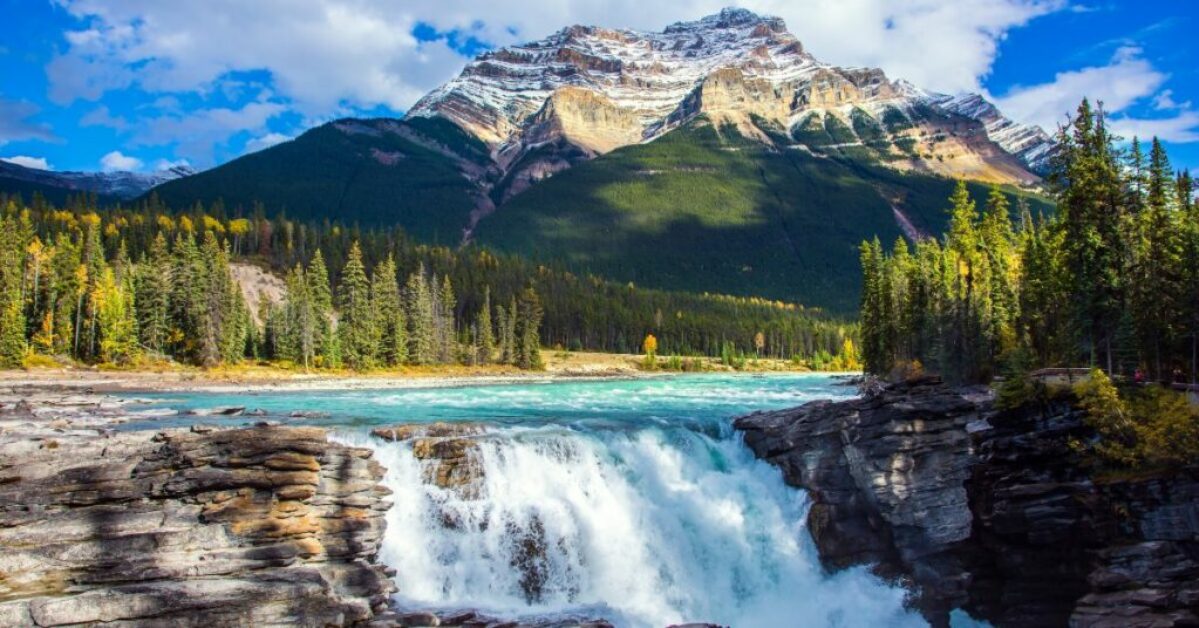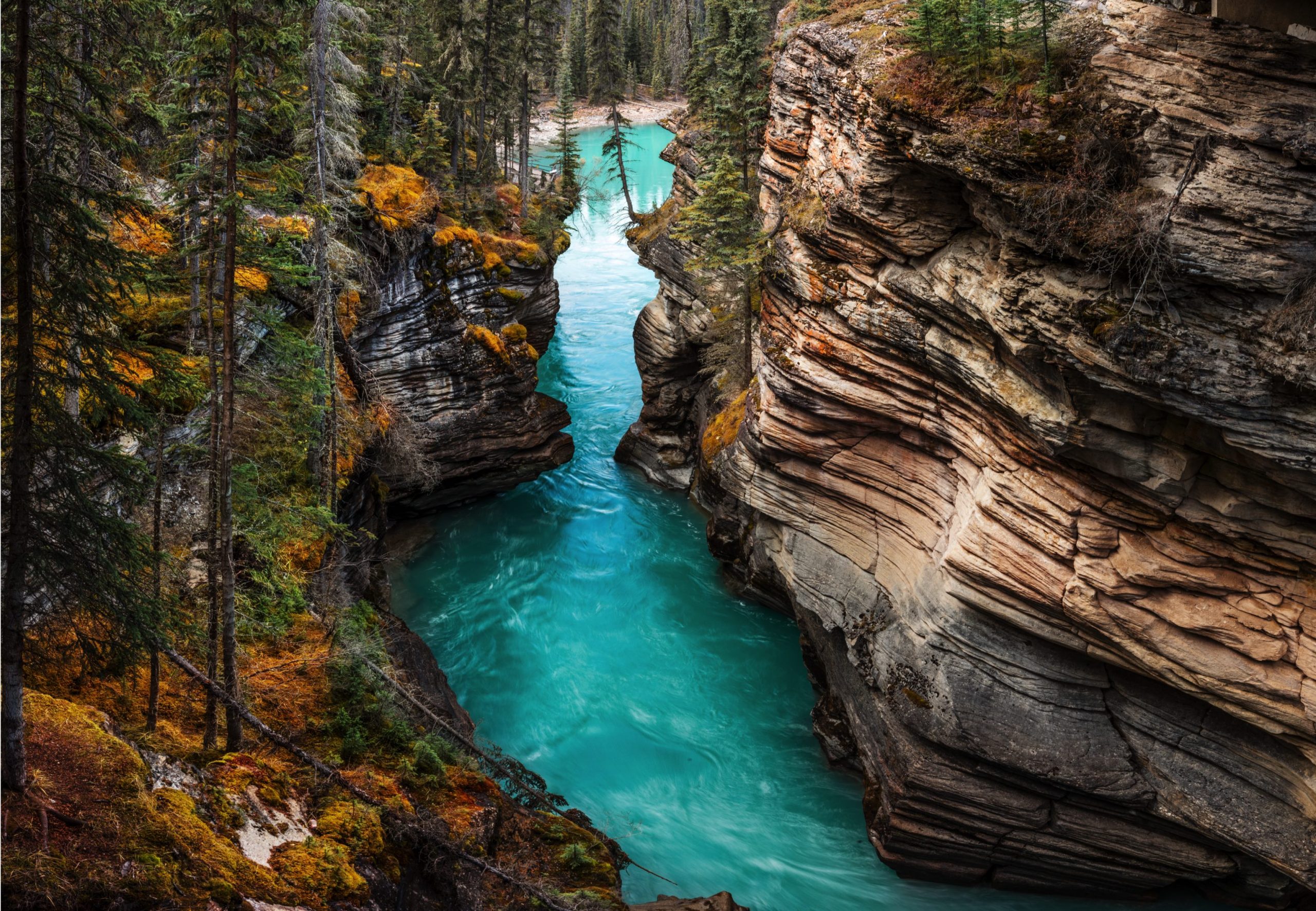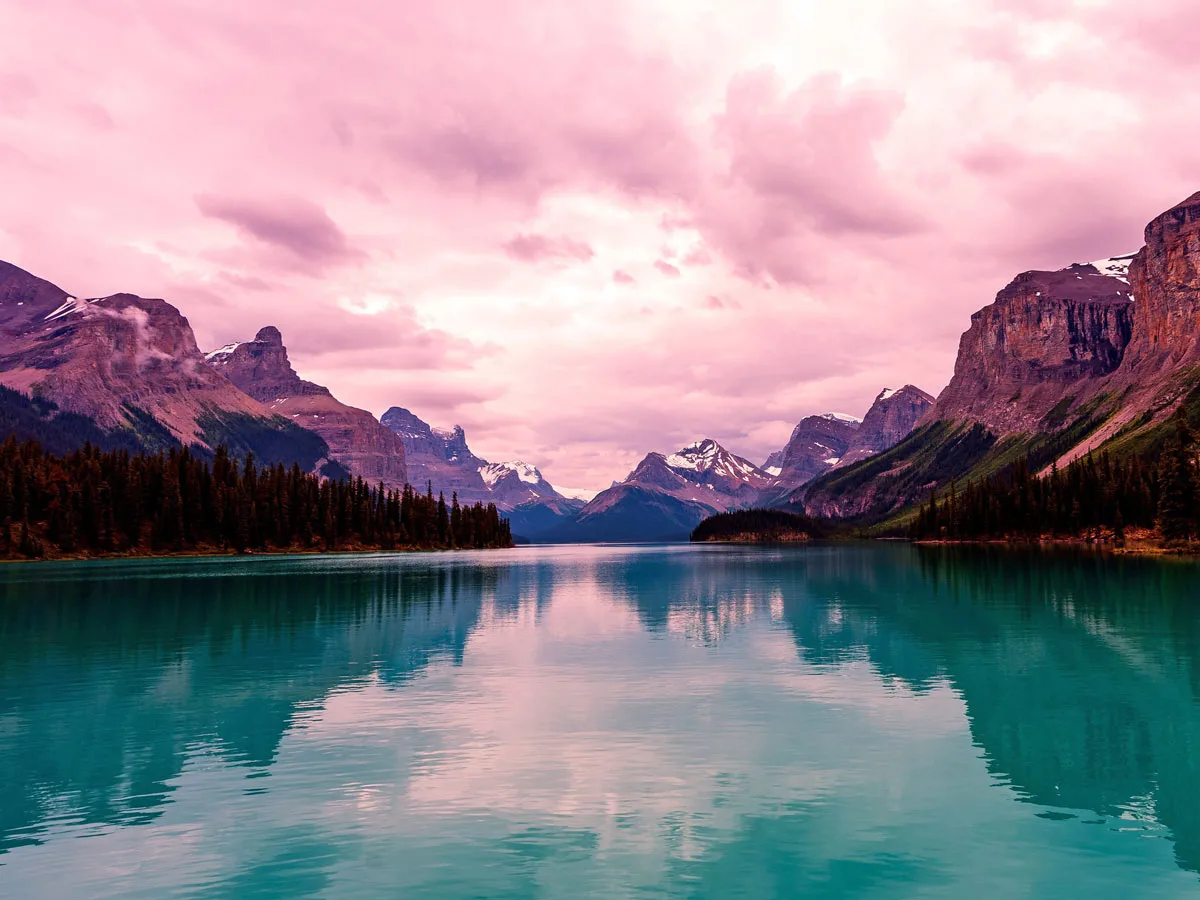Jasper National Park: Best Adventure & Incredible Wilderness
Jasper National Park, located in the Canadian Rockies, astonishes visitors with its immense wilderness territory that has remained pristine and captures everyone with breathtaking scenery, abundant wildlife sightings, and boundless opportunities for exploring nature. Established in 1907, Jasper National Park is recognized as a UNESCO World Heritage Site due to its magnificent natural splendor and crucial ecological importance. This thorough article delves profoundly into the wonders of Jasper National Park, investigating its origins, primary attractions, activities in the wilderness, and conservation efforts to protect its beauty for future generations.
The vastness of the landscape and the wealth of plant and animal species that have flourished here for millennia continue to inspire awe. While exploring its rugged mountains, dense forests, and crystal clear lakes, one gains an even deeper appreciation for the pristine majesty of this region that remains largely untouched by time.
Jasper National Park: A Historical Overview
For thousands of years, Cree, Stoney, and Metis, among others, thrived among the steep mountain peaks, clear-water lakes, and deep green valleys of the region now protected by Jasper National Park. Yet, these first peoples benefitted from the resources of the remarkable landscape only from the 19th century when their way was crossed by fur traders and the most famous explorers of that era: David Thompson, and Jasper Hawes – who gave his name to the park.
The construction of the transcontinental railway opened up the opportunity to unleash the full potential of the pristine valley in the majestic Canadian Rockies, as well as to populate the region between lakes, forests, mountains, and glaciers. The then Canadian Minister of Labor, William Lori, realized the need to protect unique nature and wildlife and established lunatogel Jasper Forest Park in 1907. This territory had to preserve its diverse ecosystems in unity and for people, as happened when expanded and became a national park in 1930. Since that time, Jasper National Park has been a place where body and soul are nurtured with nature’s beauty.

Natural Attractions
Jasper National Park spans over 11,000 square kilometers, encompassing a diverse array of landscapes, from towering peaks and glaciers to dense forests and tranquil lakes. The park’s natural attractions are a testament to the awe-inspiring beauty of the Canadian Rockies.
Majestic Mountains
The Rocky Mountains are the defining feature of Jasper National Park, with their rugged peaks and expansive ranges. Mount Columbia, the highest peak in Alberta, stands at 3,747 meters and is a popular destination for mountaineers. The Maligne Range, Pyramid Mountain, and the Victoria Cross Ranges offer spectacular vistas and challenging climbs for avid hikers and climbers.
Glaciers and Icefields
Jasper National Park is home to several glaciers and icefields, remnants of the last Ice Age. The Columbia Icefield, one of the largest icefields in North America, straddles the border between Jasper and Banff National Parks. Visitors can explore the Athabasca Glacier, part of the Columbia Icefield, through guided tours that provide a close-up view of this ancient ice formation. The nearby Angel Glacier and Snow Dome are also impressive sights, offering glimpses into the park’s glacial history.
Lakes and Rivers
The park’s captivating lakes and rivers are another must-see attraction. Maligne Lake is the park’s most famous lake. It is noted for its striking blue hue and stunning surrounding mountains, one of which is Samson Peak. The lake’s Spirit Island is one of the most well-known and photographed in the Canadian Rockies. You may include Pyramid Lake, Patricia Lake, and Medicine Lake. Boating, fishing, and relaxing are all odours that will do you well.
The Athabasca River is a protected Canadian Heritage River that runs through the park and piks Lake Athabasca in the park’s north provides the majority of the water necessary for the surrounding ecosystems. The river is a fantastic place to explore while white-water rafting and kayaking due to the fast-moving waters and scenic rapids. The Maligne River and the Sunwapta River are two additional fantastic locales to go water vehicles while silently considering nature.
Waterfalls
Jasper National Park boasts several stunning waterfalls that add to its natural allure. Athabasca Falls, one of the most powerful waterfalls in the Rockies, plunges into a narrow canyon, creating a dramatic display of rushing water and mist. Sunwapta Falls, located along the Icefields Parkway, offers equally captivating views, especially during the spring and early summer when the river is at its peak flow. Tangle Falls, with its multi-tiered cascades, is another picturesque stop for visitors traveling along the parkway.
Wildlife
Jasper National Park is a haven for wildlife, providing critical habitats for a diverse array of species. The park’s rich biodiversity and commitment to conservation make it an ideal destination for wildlife enthusiasts and nature lovers.
Mammals
The park is home to large mammals such as elk, mule deer, white-tailed deer, and moose, which are often seen grazing in meadows and along roadways. Predators like black bears, grizzly bears, wolves, and cougars roam the park’s forests and mountains, playing a crucial role in maintaining the balance of the ecosystem. Bighorn sheep and mountain goats are frequently spotted on rocky slopes and cliffs, showcasing their agility and resilience.
Birds
Birdwatchers will find Jasper National Park to be a paradise, with over 260 bird species recorded in the area. Bald eagles, ospreys, and peregrine falcons are among the park’s raptors, while waterfowl such as loons, ducks, and grebes inhabit the lakes and rivers. Songbirds, woodpeckers, and owls add to the park’s avian diversity, offering delightful sightings and sounds for visitors.
Other Wildlife
The park’s smaller mammals, including beavers, porcupines, and marmots, contribute to the rich tapestry of life in Jasper. Amphibians like frogs and salamanders, as well as reptiles such as garter snakes, are also part of the park’s ecosystem. The park’s diverse flora, including wildflowers, shrubs, and ancient trees, provides essential habitats and food sources for these creatures.
Outdoor Activities
Jasper National Park offers a wide range of outdoor activities, catering to adventurers, nature enthusiasts, and families alike. Whether exploring on foot, by bike, or on the water, visitors can immerse themselves in the park’s natural beauty and experience its many wonders

Hiking and Backpacking
Hiking is the most widespread way to explore the Park as more than 1,200 kilometers of trails cover Jasper. From easy and simple walks to multi-day tours with equipment passing along glaciers, mountain ridges, and lakeshores. Maligne Canyon gorge is a meandering limestone canyon that has water flowing, pouring into beautiful waterfalls and ideal geological phenomena. The Valley of the Five Lakes is a stunning trail passing five beautiful multi-colored lakes that range from a light blue to an underwater deep emerald green.
The hardest trails are located aside and last from several days to a week at the backcountry. In Jasper, the most popular trail is Skyline, not very long but very located high above the treeline to get an ideal view of the Alpine ridge. Tonquin Valley and North Boundary Trails are ideal multi-day hidden rides into the rugged Rockies of Jasper.
Biking
Additionally, Jasper National Park offers a huge number of walking routes for cyclists, ranging from light asphalt paths to difficult mountain trails. Jasper Discovery Trail, 30 km in length, encircling the town of Jasper, provides hiking for an easy pace while enjoying stunning views of the mountains. The local Pyramid Bench Trails and the Overlander Trail are suitable for few walks in the woods and ridges. Also, the road connecting Jasper and Banff National Park, the Icefields Parkway, is a very popular scenic route. Cycling on it will give you the opportunity to enjoy stunning glaciers, peaks, and valleys. This is a must-see location for road cyclists.
Water Activities
Furthermore, Jasper’s lakes and rivers provide various water resources. Two local options for canoeing or kayaking are Maligne Lake and Pyramid lake, both of which provide excellent flat waters for enjoying the mountain views. For a more tranquil formation with extraordinary views, drift along the Athabasca River; otherwise, rock down the white-water River Athabasca – and Sunwapta River, with guided rides available. They offer an adrenaline-filled and fun white-water rafting journey for rivers at every stage, from easy float elements for wildlife watching on dry routes to professional guides. From half-day and full-day trips to a summary of the season, they care that you can totally enjoy the water party.
Winter Sports
When winter comes, Jasper National Park turns into a magic land of snow attracting tourists by a variety of cold outdoor activities. Marmot Basin Ski Resort, located in the park, is suitable for all skill levels; the most popular activities there are downhill skiing and snowboarding. The extensive network of cross-country ski trails can also offer an exciting time skiing in the snow-covered park. Snowshoeing in Jasper is also very popular, and Pyramid Lake and Maligne Lake are good examples of amazing hikes in the forests and along the frozen shorelines. Jasper’s frozen waterfalls – such as Maligne Canyon – can have climbers by their ropes in winter.
Cultural and Historical Significance
Jasper National Park’s cultural and historical heritage is an integral part of its identity. The park’s Indigenous history, early exploration, and development as a national park all contribute to its rich tapestry.
Indigenous Heritage
Indigenous peoples have long inhabited the Jasper area, with their presence dating back thousands of years. The park is part of the traditional territories of the Aseniwuche Winewak Nation, the Stoney Nakoda, and other Indigenous groups. Their deep connection to the land is reflected in their cultural practices, stories, and stewardship.
Visitors can learn about the park’s Indigenous heritage through interpretive programs, cultural exhibits, and collaborations with Indigenous communities. The Jasper Yellowhead Museum and Archives and the Palisades Stewardship Education Centre offer insights into the history and traditions of the region’s Indigenous peoples.
The Town of Jasper
The town of Jasper, established as a railway town in the early 20th century, serves as the gateway to the national park. With its charming streets, historic buildings, and welcoming atmosphere, Jasper offers a delightful blend of natural beauty and small-town hospitality. The town provides a range of accommodations, dining options, and visitor services, making it an ideal base for exploring the park.
The Jasper Park Lodge, a historic hotel nestled on the shores of Lac Beauvert, offers luxury accommodations and a glimpse into the park’s early tourism history. Visitors can enjoy the lodge’s amenities, including golf, spa services, and fine dining, while taking in the stunning natural surroundings.
Historic Sites
Jasper National Park is home to several historic sites that highlight the region’s past. The Athabasca Pass, a key fur trade route used by early explorers and traders, is a designated National Historic Site. The Jasper House site, once a vital trading post, offers a glimpse into the fur trade era and the lives of early settlers.
The park’s historic trails, such as the Overlander Trail, follow routes used by early pioneers and offer opportunities for hiking and exploration. These sites and trails provide a deeper understanding of the park’s historical significance and the challenges faced by those who traversed its rugged terrain.
Conservation and Environmental Stewardship
As a UNESCO World Heritage Site, Jasper National Park is committed to preserving its natural and cultural heritage for future generations. Conservation and environmental stewardship are central to the park’s management, ensuring the protection of its diverse ecosystems and species.
Wildlife Conservation
Efforts to protect the park’s wildlife include monitoring populations, managing human-wildlife interactions, and restoring critical habitats. The park implements measures to reduce vehicle-wildlife collisions, such as wildlife corridors and fencing along highways. Research and conservation programs focus on endangered species, including the woodland caribou, which face threats from habitat loss and climate change.
Visitors are encouraged to follow guidelines for safe wildlife viewing, such as keeping a safe distance, not feeding animals, and disposing of waste properly. By respecting wildlife and their habitats, visitors can contribute to the park’s conservation efforts.
Ecosystem Management
Jasper National Park’s diverse ecosystems, from alpine meadows to boreal forests, require careful management to maintain their health and resilience. Initiatives include controlling invasive species, restoring natural fire regimes, and protecting water quality. The park also collaborates with Indigenous communities to incorporate traditional knowledge into ecosystem management practices.
Sustainable tourism practices are promoted to minimize the environmental impact of visitors. This includes encouraging the use of designated trails, reducing waste, and supporting eco-friendly businesses. Education and outreach programs aim to raise awareness about conservation and the importance of protecting natural resources.

Planning Your Visit
A visit to Jasper National Park offers a chance to connect with nature, explore stunning landscapes, and experience the park’s rich cultural heritage. Whether you’re seeking adventure, relaxation, or education, Jasper provides a wealth of opportunities for a memorable trip.
Getting There
The Jasper National Park can be reached by car, train, or air. The closest major airport is the Edmonton International Airport located some 370 kilometers east of the park. It is possible to reach the national park by car hire or a shuttle bus from Edmonton. The journey promises beautiful views down the Yellowhead Highway; the driver is also likely to spot some local fauna. The VIA Rail Canadian train service connects Jasper to major Canadian cities such as Vancouver, Toronto, and more in a train journey through the park’s stunning scenery. The Jasper VIA Rail Canadian Train Station is a national historic site located in the town’s center.
Accommodation
Jasper has accommodations for every preference and price point. You can access luxury hotels, rustic lodges, and bed and breakfasts at Jasper’s Park. The Fairmont Jasper Park Lodge offers luxurious accommodation with excellent views and various high-end facilities. Campgrounds are also available where you can rent a spot for a tent or parking. These campgrounds provide fire pits, picnic tables, and trail access. The Jasper National Park has backcountry campsites for people who want to walk through the park for more than a day. You can only camp in the ground with a permit; the park also recommends that visitors be well prepared for all seasons and wild animals.
Activities and Tours
Joining guided tours and engaging in various activities during your stay can enhance your experience. Jasper can be home to your active holiday. For example, local wild outfitters offer guided hiking tours, wildlife safaris, canoe safaris, and much more, featuring expert knowledge and indigenous space These are just a few of the many different types of recreation and relaxation in Jasper.
The Jasper Visitor center is a good place to find out about this and get information about the park’s trails, activities, and rules. And for a new angle, choose the flight sight, one or both of the following, to view Jasper by helicopter or Athabasca glacier by glacier phenomenon sight. Thus, you get a more complete picture of the park and will be able to learn its geology and natural history.
Responsible Travel
Visitors to Jasper National Park are encouraged to practice responsible travel to help protect the park’s natural beauty and wildlife. This includes staying on designated trails, packing out all trash, respecting wildlife by keeping a safe distance, and following Leave No Trace principles. By being mindful of their impact, visitors can contribute to the preservation of this extraordinary landscape.
Conclusion: Discovering the Magic of Jasper
Jasper National Park is a place of wonder and inspiration, where the majesty of nature meets the richness of history and culture. From its towering peaks and glaciers to its serene lakes and diverse wildlife, Jasper offers an experience like no other. Whether you’re seeking adventure, relaxation, or a deeper connection with the natural world, Jasper has something to offer. If you enjoyed reading this article, please consider exploring our piece about Chhena Poda, a delightful Indian dessert that will tantalize your taste buds.
